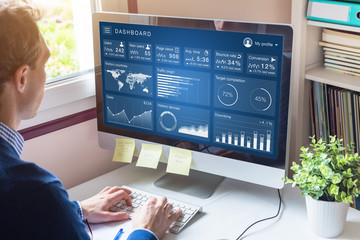Social Media Marketing uses websites, applications, or other platforms for marketing purposes. It is one of the fastest-growing marketing tools in existence today. This is because it allows businesses to promote their products and services with the help of targeted advertising. Aside from that, social media marketing allows consumers to interact with brands through social sites and communities. Therefore, it is becoming a popular tool for marketers and researchers alike.

The engagement rate is a great measure of a social media campaign’s performance. It combines likes, shares, comments, and other interactions. However, it can take a lot of work to figure out how actually to calculate it. Fortunately, there are several tools available that will make it simple. Read on https://www.rankboss.com/ to learn more about social media marketing metrics.
While there is no single best way to calculate it, the engagement rate is a good indicator of how effective your social media campaigns are. But it is also important to look at other metrics, such as click through rates and the number of impressions.
A high engagement rate may be the result of good content. Moreover, it indicates that your audience is actually engaging with your brand. For instance, a post with a video may attract more likes than a text-based post. Similarly, a link tweet may garner more interest than a regular tweet.
Amplification rate is a metric that shows the number of people who have shared a given post on social media. This metric is measured in many ways, but the most common is the number of times a given post has been re-shared. It’s a measurable metric that can help you to gauge the success of your social media strategy.
The amplification rate is one of the most important components to a healthy social media marketing strategy. To get the most out of it, you have to determine the right goals for your strategy. Ultimately, your goal is to increase website traffic and lead generation. You can do this through organic social media amplification or through paid advertising. In addition to increasing website traffic, amplification can also help you to reach a wider audience. With the right strategy, you can reach millions of net new eyes on your content.
If you want your social media campaigns to reach their potential, tracking your viral rate can be a big help. You can use the data to improve your marketing efforts and understand your audience better.
The virality rate, or amplification rate, measures the percentage of followers who share your content. It is calculated by multiplying the number of shares by the number of impressions. The audience is interested in the content when a post receives a high amplification rate.
Similarly, the click-through rate measures how many people clicked on your social content. This can be used to access other parts of your website or online store. In addition to this, it is a great indicator of your success in marketing.
The audience growth rate, or AR, is a measurement of the rate at which a brand gains new followers on social media channels. While this measure is not directly related to the amount of money spent on marketing, it can help marketers determine if their ad dollars are being well spent and whether or not they are getting the most out of their efforts.
As a measure of the relative popularity of a given channel, the AR can help you see which social media platforms are performing the best. There are many factors to consider, including your own marketing strategy, the type of content you’re producing, and the timing of the campaign. Some platforms have specific reporting periods. Others last a quarter.
Conversion rate is a metric that shows how successful your social media marketing efforts are. It can be tracked in many popular platforms such as Twitter Ads, Facebook Ads and Google Analytics. Conversion rates vary across industries and different product categories. For example, fashion brands tend to convert viewers into buyers about 2.4% of the time. However, baby brands convert viewers into buyers 99% of the time.
If you’re looking to boost your conversion rate, there are several ways to increase it. You can create an omnichannel social media strategy, experiment with creative elements or change the flow of your marketing to boost conversions. Regardless of your strategy, you should start by analyzing and testing. While a 2-5% conversion rate may seem like a lot, you have room to grow. Try testing different offers and identifying obstacles that could hinder conversion. Once you determine what is preventing you from reaching a high conversion rate, you can optimize your social media marketing campaign.